Prof Aloke Kumar gives 360-degree view of Kalighat Pat
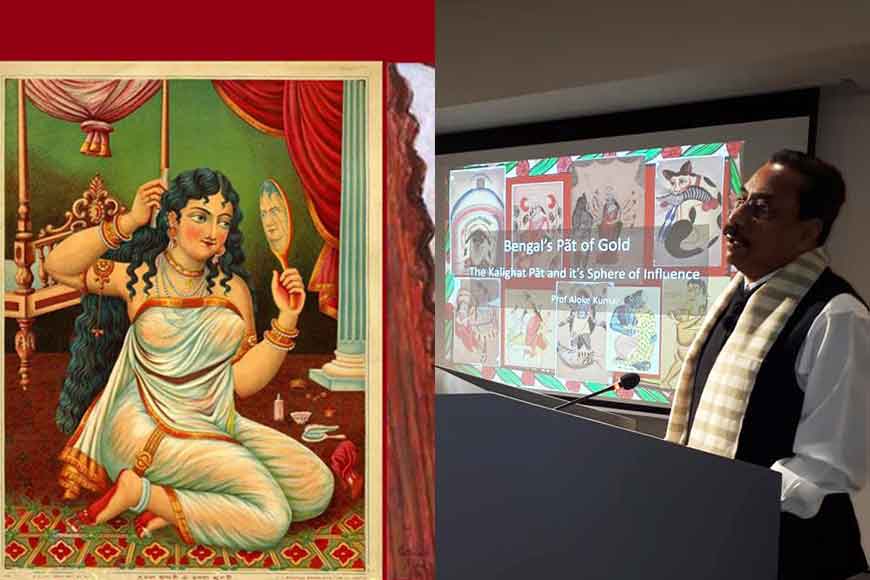
Kalighat painting or pat was not a well-recognized form of art and took years even to be marked as a proper art form. Today it has a wide influence in various forms of art throughout the world. Kalighat Pat is the only indigenous art of West Bengal recognized today throughout the world. Kalighat, which is believed to have been having a temple from 15th century has been referred to in Mansar Bhasan. The Kalighat temple in its present form is only about 200-years-old. Kalighat Pat originated in the early 19th-century in the vicinity of this Kali Temple.
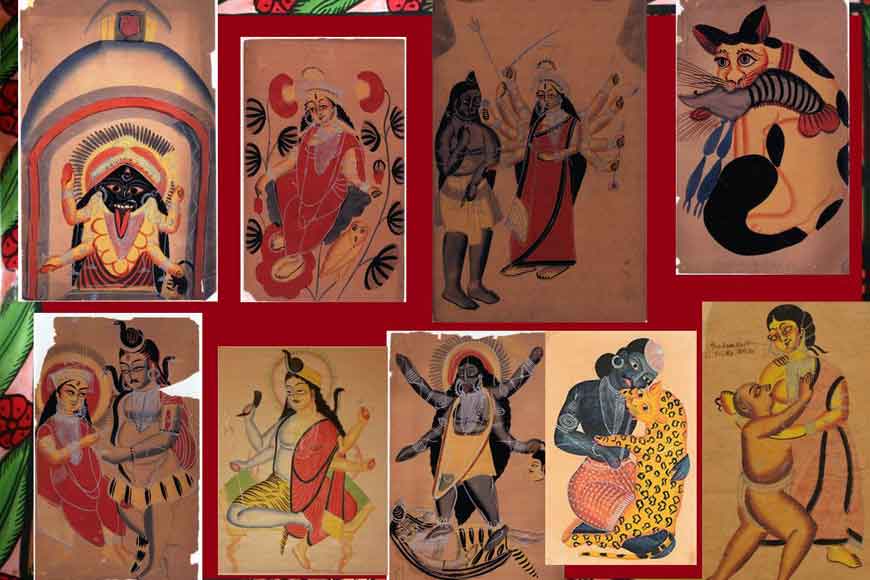
Professor, editor and scholar Aloke Kumar recently delivered a lecture at KCC Emami Art, providing valuable insights about the Kalighat pat and its spheres of influence in the spectrum of art. His father was an antiquarian and had a huge collection of pantheon literature reconstructed from puranic literary corpus which led him to study the Kalighat pat and different nuances. The lecture traced the influence of this art through the passage of time, from the origin to its commercialization. From 1830s until the 1930s, the images were painted by Patuas and sold as pilgrimage and tourist souvenirs, in the shops and stalls in Kalighat’s alleys. With advent of Eastern Bengal Railway in 1857,Patuas reached Kolkata more easily and found their way to Kalighat to sell their paintings.
Pats were primarily of two kinds- Sara and Jorano. The Kalighat Pat took its content more from the Sara and the form from the Jorano Pat. The Jorano Pat is segmented into different pictorial images. The narrative features story telling with the help of songs. The segmented images being separated lend its form to the Kalighat as a single frame. Kalighat Pat was very much existentin early 19th Century as is evident from an aquatint of Madam Belenos dated 1830 where there is a picture of some God resembling a Kalighat Pat, although the rendition of Lord Shiva is not accurate enough. The tradition of Kalighat pats had a strong association with the famous Hindu temple but the art form was highly diverse, as it included subjects both from religious and non-religious aspects.
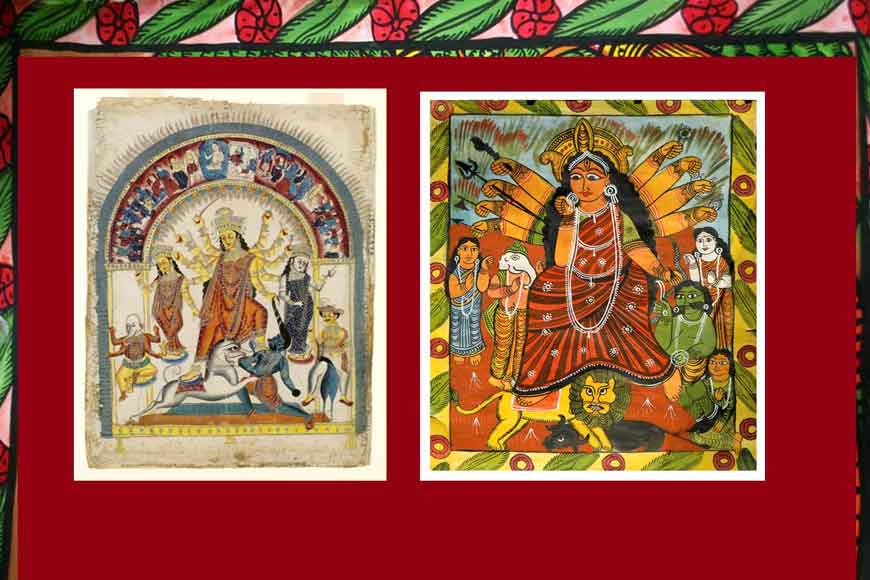
An aquatint of Balthazar Solvyns, 1775makes it evident that Chalachitra over the idol of the Durga Maa existed but Kalighat paintings had a significant impact on the images. Woodblock prints taken from the Kalighat images also were prevalent in the market. Apart from dealing with gods and goddesses, the Kalighat images also threw a light on the Babu Culture and socio- political occurrences of that era. Meanwhile,woodblock prints were inspired by the Kalighat Pats. The patuas hand painted these woodblock images, and Kalighat painting reached the rural areas through pilgrims, even impacting the tribal art, such as the Santhal Pats.
The next influence can be found in Bottala literature and Panjikaor the Bengali Almanac. Both the Bottala and the Panjika started to carry images influenced by Kalighat. The other influence was on erotica. Kalighat Pat had many erotic images which included the much talked about love affair of Elokashi and Mahant. This had a strong impact on the printing of lithography and erotic Bottala literature which evolved as a genre and found its place in the collectors of yesteryears and recent times.
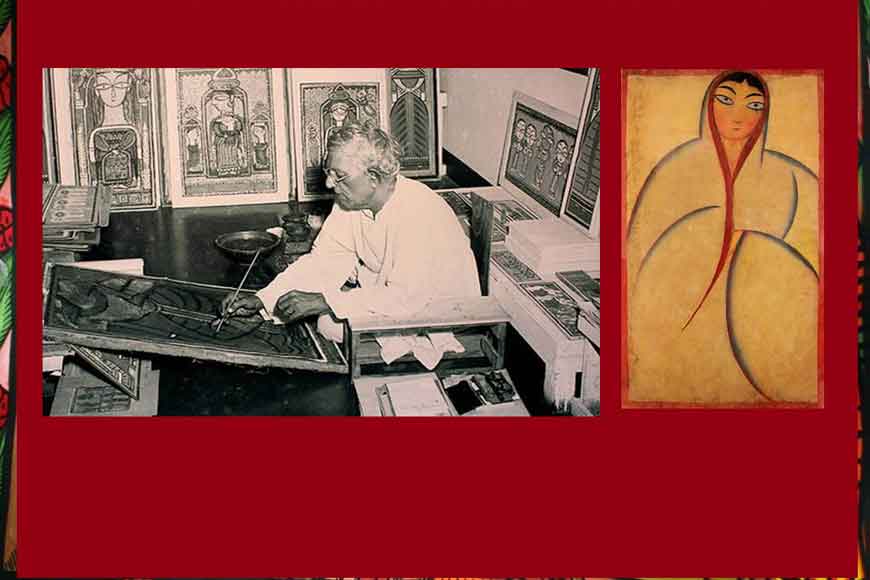
Advertisements of this time also drew a lot of inspiration from the Kalighat pat. These drawings then moved on to lithography where it started to be copied and printed in the lithographic process both in coloured and black and white forms. The Colour Litho Print in the style of Kalighat also had a significant impact in Cigarette Cards like ITC which came out with lithographic cards featuring byjee or harlots of that day. British Mill labels and safety matches printed from Japan was a mirror of the Kalighat Pats. The influence is also highly reflected in the postcards printed by Joshi Brothers of Bombay.The other prominent influences can be found on the porcelain figurines of Gods and Goddesses which were made in Dresden Germany and sent to Calcutta to be sold in the open market. Professor Kumar also gave some examples of Ganesh, Vidya and Shiva-Parvati with Ganesh riding Nandi and the Kalighat Cat.
Natungram, Bardhaman also started copying the image of the Kalighat drawing. Famous wood engraver Bhakta Bhaskar work reflects the influence of Kalighat. The image of the gods worshipped today is a direct impact of Kalighat, as the Kumartuli artists were highly influenced by the art. Many eminent painters owe their allegiance to Kalighat paintings. Jamini Roy was a self-confessed patua who lived with the patua community to understand the nuances and brush strokes. He even refused to sign his paintings on the line of the Kalighat patuas. Mukul De, the famous Shantiniketan painter and dry-point artist also talked about the influence of Kalighat painting on him in his book.
Arist, Paritosh Sen, another self-declared follower of Kalighat Pat met Pablo Picasso in the 1950 at his studio in Rue des Grands Augustins, and spoke for five hours. He gifted him a Sara Pat and some Kalighat Paintings which is said to have influenced Picasso’s art.French Artist Fernand Leger was also influenced by Kalighat. But, Kalighat paintings did not enjoy the pride of place and was left to some individuals to propagate the art. Art critic Ajit Ghosh wrote about the art in Rupam Magazine and Smithsonian Journal. He had a huge collection of Kalighat Pats which was later handed over to the Birlas.
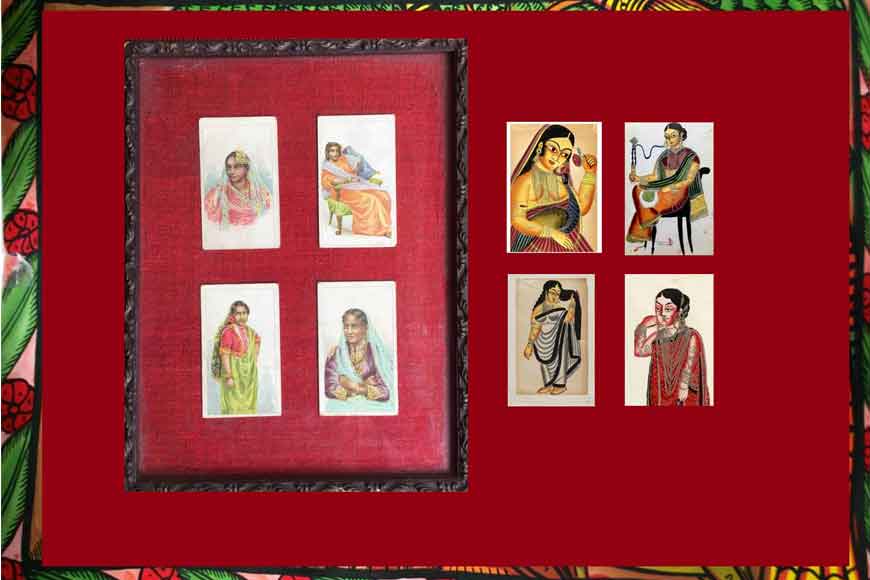
Radha Prasad Gupta wrote widely on the subject particularly in Desh. As a note of reminiscence, Prof Kumar said: “R.P. Gupta introduced my father Nirmal Chandra Kumar, to Kalighat paintings. My father was not too bent on this Bengal iconograph. Later, he went on to promote Kalighat Pat extensively.” He also spoke of contemporary artist Kalam Patua who is carrying on the tradition of Pat in terms of form and content. Gradually, Kalighat painting has come to a full-circle where theme pujas have declared influence of Kalighat Painting. It has also penetrated in the world of fashion --- be it textiles or attire.Calendars, Jigsaw puzzles are designed using Kalighat Paintings.
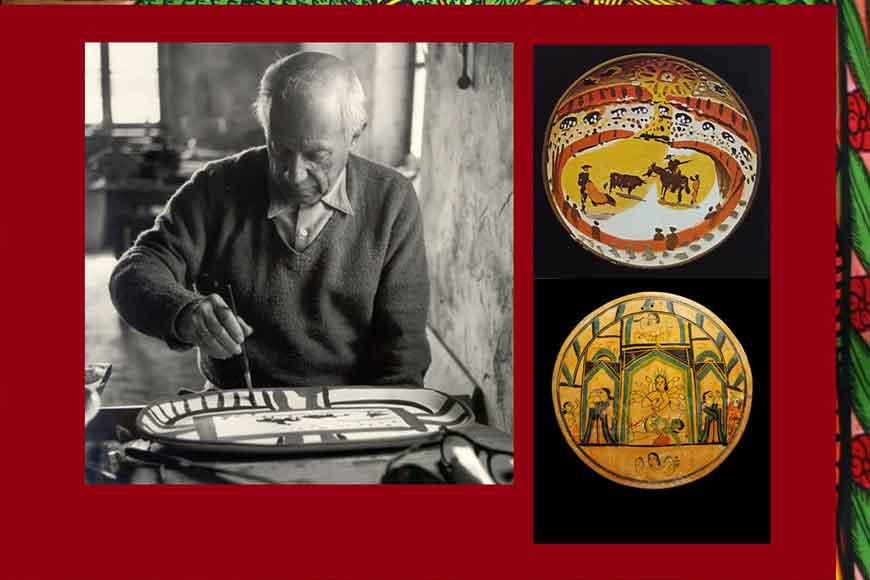
“It is true that it is a sphere. Many often criticize the commercialization of this age-old tradition of Kalighat Pat but personally, I embrace it because every form of art is still influenced by it. It is not a forgotten art. And I also believe that in the days to come, Kalighat pat will continue to exist in various art forms.”










